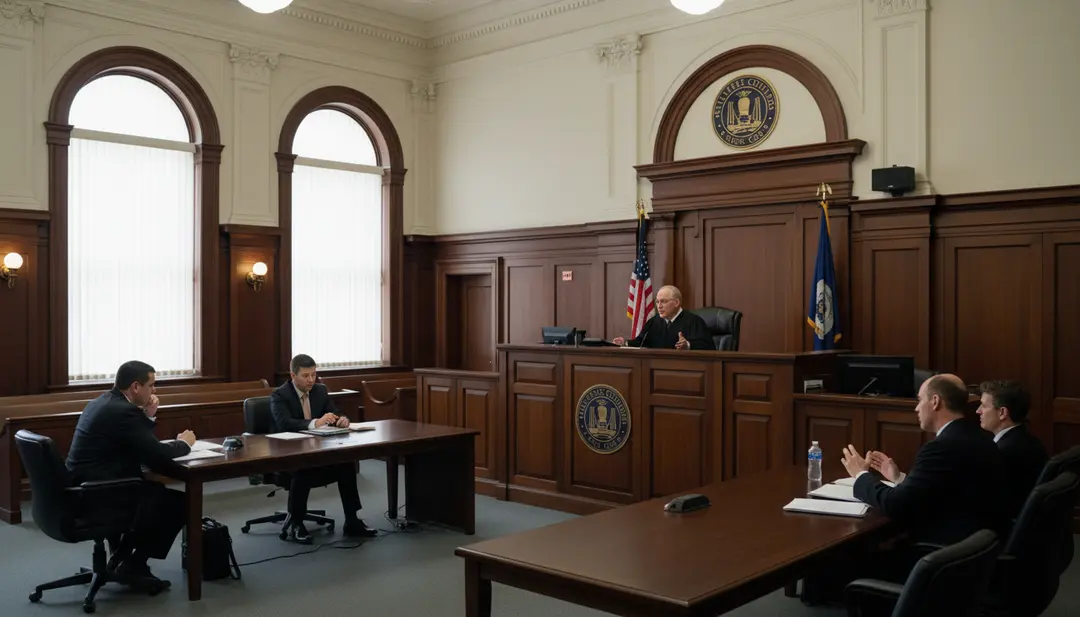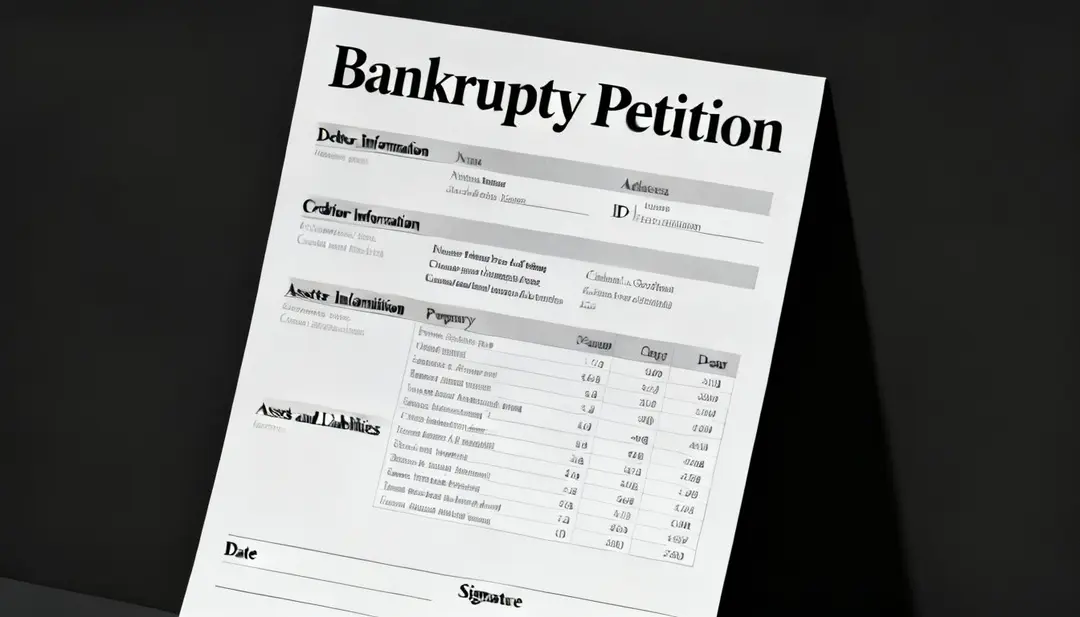Your Creditor Rights in Bankruptcy: What Happens to Creditors When Someone Files
A homeowner just filed bankruptcy, and your board is asking what comes next. You need a clear picture of creditor rights in bankruptcy and what happens to creditors when someone files bankruptcy, because your budget, reserves, and service contracts depend on it.
Here’s the short version. The automatic stay kicks in the moment the case is filed, which pauses collections, late notices, and foreclosure activity. Pre-petition assessments may be discharged in Chapter 7, while Chapter 13 usually folds past-due amounts into a court-approved payment plan. Post-petition dues still accrue, and your assessment lien rights matter for priority and potential recovery.
Your role as a creditor does not end with the stay. You should track deadlines and file a complete, timely proof of claim with clear account records. You should also communicate with the owner’s attorney in a respectful, factual way to avoid FDCPA missteps and keep lines open for repayment options. Expect cash flow pressure, and be ready to make short-term budget adjustments if needed.
Arizona adds its own twists. Recent changes to garnishment and exemptions under Prop 209 can limit post-judgment recovery, which makes getting the bankruptcy steps right even more important. If you want a deeper primer that ties collections to real bankruptcy timelines, review our guide to Arizona HOA Rights During Homeowner Bankruptcy.
At Halk, Oetinger, and Brown, you get practical help, not hourly surprises. Our flat-rate general counsel services and no-cost assessment collection program are built for Arizona HOAs, so you can protect community finances while handling bankruptcies with confidence and care.
Overview of U.S. Bankruptcy Code and Its Purpose
The U.S. Bankruptcy Code gives honest but struggling debtors a way to reset, while protecting secured creditors and setting fair rules for payment. For HOAs, the Code defines what you can collect now, what gets delayed, and what might never be paid. Understanding creditor rights in bankruptcy, what happens to creditors when someone files bankruptcy, and how liens work inside a case helps you protect assessments and keep your budget steady.
Bankruptcy divides debts into secured and unsecured claims. Your assessment lien, when properly recorded, secures part or all of the balance. The automatic stay pauses collection, but it does not erase your lien. Post-petition assessments keep accruing while the owner holds title. Your job is to preserve your rights, meet deadlines, and use the plan process to improve recovery.
Chapter 7: Liquidation and Its Effects on Your HOA
In Chapter 7, the homeowner liquidates non-exempt assets to pay creditors. Most cases are “no-asset,” which means there is nothing for unsecured creditors. Your recorded lien survives the discharge, since a discharge clears personal liability, not property rights.
What this means for your HOA:
- Secured lien stays: Your assessment lien remains attached to the property, subject to senior liens, taxes, and Arizona priority rules.
- Unsecured portion may be discharged: Amounts beyond lien value, or not secured by a valid lien, can be wiped out.
- Post-petition dues continue: Assessments that come due after filing are still owed while the owner holds title.
To protect recovery, take these steps:
- Verify your lien. Confirm recording, amounts, and the legal description match the lot or unit.
- File a complete proof of claim. Include a ledger, governing documents, and the recorded lien.
- Separate the debt. Break out pre-petition, post-petition, late fees, costs, and attorney fees.
- Monitor the case. Track trustee notices, asset reports, and deadlines to object if needed.
- Consider relief from stay. If nonpayment continues and equity supports action, ask counsel about seeking permission to resume lien foreclosure.
- Keep communication professional. Coordinate with the owner’s attorney to address ongoing assessments and insurance.
Practical tip: If wage or bank garnishment was part of your pre-bankruptcy plan, remember Arizona limits may apply. See how those limits impact post-judgment collection in Arizona Prop 209's Impact on HOA Debt Collection.
Chapter 13: Repayment Plans That Protect Creditor Rights
In Chapter 13, the homeowner proposes a 3 to 5 year plan to catch up. Arrears on HOA fees are paid over time, and the automatic stay pauses foreclosure while the plan is pending. You retain your lien until paid according to the plan and applicable law.
How Chapter 13 affects your rights:
- Arrears are scheduled: Past-due assessments and approved fees are paid through the trustee, based on your filed claim.
- Lien retention: Your secured claim stays in place until the secured portion is paid. Interest or fees depend on state law and the plan terms.
- Ongoing assessments: The owner must pay new dues on time after filing. Missed post-petition payments can justify action.
You can protect your position by engaging in the plan process:
- Object to unfair terms. If the plan understates arrears, misclassifies your claim, or omits fees authorized by your documents, file a concise objection.
- Attend key hearings. The 341 meeting and confirmation hearing are where mistakes get fixed and timelines lock in.
- Keep your records tight. Provide a clean ledger, governing documents, lien proof, and any payoff statements upon request.
- Watch for defaults. If the owner misses post-petition dues or plan payments, consult counsel about remedies, including stay relief.
- Coordinate with management. Align notices, ledgers, and communications so your claim and plan payments match.
Arizona angle: Tight household budgets and Prop 209 limits can push owners into Chapter 13 rather than post-judgment payment agreements. A well-documented claim and prompt plan objection, when needed, often make the difference between partial and full recovery of secured arrears.
Secured, Unsecured, and Priority Creditors: Know Your Status
Your status as a creditor drives what you get paid, when you get paid, and whether your claim survives discharge. In bankruptcy, claims fall into three buckets. A recorded assessment lien gives you a secured claim tied to the home. Unpaid amounts without a valid lien are unsecured and often receive little or nothing. Certain claims, like some taxes and support, are priority and get paid before general unsecured creditors.
For Arizona HOAs, this classification is not just academics. It controls real outcomes in Chapter 7 and Chapter 13. A secured assessment lien can survive discharge and must be addressed to sell or refinance. Unsecured balances may be wiped out in Chapter 7 or paid pennies on the dollar in Chapter 13. Knowing where your claim sits helps you assert creditor rights in bankruptcy and sets expectations for what happens to creditors when someone files bankruptcy.
Why Recording HOA Liens Secures Your Rights in Bankruptcy
Recording the lien early is the single best step you can take to protect assessments in an Arizona owner bankruptcy. When you record a proper lien against the lot or unit, your claim becomes secured by the property, subject to senior deeds of trust and taxes. That status matters in every chapter.
Here is what prompt lien recording does for you:
- Anchors your claim to the property: A discharge clears personal liability, not property rights. Your valid lien can survive a Chapter 7 discharge and remains a barrier to transfer until paid.
- Improves recovery in Chapter 13: Secured arrears with a recorded lien are scheduled in the plan and paid over time. You keep the lien until paid as allowed by law and the plan.
- Reduces risk of total loss: If your claim is unsecured, you might recover nothing in a no-asset Chapter 7. A lien gives you a seat at the table and a path to payment.
- Supports stay relief: If post-petition assessments go unpaid and equity exists, a secured position strengthens a motion for relief from the automatic stay.
Arizona specifics you should keep in mind:
- Record according to your CC&Rs and Arizona statutes. Confirm the legal description, owner name, and account detail match the county records.
- Separate what is secured and what is not. Some charges, like certain fines or non-assessment fees, may not attach with the same priority.
- Respect senior liens. Your lien sits behind deeds of trust and property taxes. Evaluate equity before considering foreclosure after stay relief.
- Keep a clean ledger. Attach the account history, governing documents, and the recorded lien to your proof of claim. Accuracy improves treatment in the plan and reduces disputes.
Practical steps to strengthen your position:
- Record the lien as soon as your documents and Arizona law allow.
- File a timely, detailed proof of claim that breaks out pre-petition arrears, post-petition dues, late fees, interest, costs, and attorney fees.
- Monitor the case for plan terms, trustee notices, and deadlines. Object if the plan misclassifies your claim or omits authorized charges.
- Coordinate with the owner’s attorney about ongoing assessments. Post-petition dues are still due while the owner holds the title.
If your board wants a refresher on the lien process and its link to recovery options, review this guide on HOA collection and lien processes in Arizona. It pairs well with your bankruptcy checklist and helps align collections with your governing documents.
At Halk, Oetinger, and Brown, our attorneys prepare and record compliant liens, file proofs of claim, and handle plan objections at flat rates. That way you protect assessments without guesswork on fees.
How Bankruptcy Affects Your Collection Efforts and Lawsuits
Bankruptcy reshapes how you collect, what you can say, and when you can act. Understanding creditor rights in bankruptcy, what happens to creditors when someone files bankruptcy, and how the stay, claims, and liens work will protect your association’s cash flow and reduce legal risk. Your litigation posture changes the moment the case is filed, so tighten procedures, document everything, and use the court process to hold your place in line.
Navigating the Automatic Stay as an HOA Creditor
The automatic stay activates the second the homeowner files. It pauses almost all collection and legal actions, including:
- Evictions and lockouts
- Wage and bank garnishments
- Lawsuits, default judgments, and hearings
- Lien enforcement and foreclosure activity
- Repossession of access devices or suspension tactics used to force payment
What should you do right away:
- Stop collection communications on pre-petition debt. Pause demand letters, late notices, and escalation.
- Split the account. Track pre-petition arrears separately from post-petition assessments and charges.
- Continue billing post-petition assessments. Ongoing dues still accrue while the owner holds title.
- Keep dialogue respectful and factual. Route communications through the owner’s attorney when possible.
When to ask for relief from stay:
- Persistent nonpayment of post-petition assessments
- No insurance, unsafe conditions, or waste that harms collateral
- No equity in the property and the home is not necessary for a reorganization
- Serial or bad-faith filings that only delay lawful lien enforcement
How to build a strong motion:
- Show cause with facts. Provide a clean ledger, dates, and amounts for missed post-petition payments.
- Prove your secured status. Attach the recorded lien and governing documents that authorize assessments, interest, and fees.
- Address equity. Include a recent value estimate, senior lien balances, and property taxes to show risk.
- Tie harm to the association. Explain budget impact, reserve strain, or service disruption from ongoing nonpayment.
- Follow local practice. Relief requests proceed by motion, with notice and a short hearing timeline. Be concise and complete.
Tip: While the stay pauses enforcement, it does not erase your lien. Maintain accurate records so you can resume lawful remedies if the court lifts the stay or the case ends.
Filing Proofs of Claim to Secure Your Share
Filing a timely, well-supported proof of claim is how you get paid through bankruptcy. It also prevents plan terms from shortchanging your lien rights.
Deadlines you need to hit:
- The claims bar date for HOAs in Chapter 13 and most Chapter 7 asset cases is usually 70 days from the petition date. Check the notice of bankruptcy for the exact date.
- If a Chapter 7 is initially “no-asset,” the court may later open a claims period if the trustee finds assets. Watch every notice.
What to include in your claim:
- Itemized account ledger, through the petition date, that separates:
- Pre-petition assessments, late fees, interest, costs, and attorney fees
- Post-petition assessments that are not part of the claim
- Basis for the claim. Cite CC&Rs, bylaws, and collection policies authorizing assessments, late charges, interest, and fees.
- Lien evidence. Attach the recorded assessment lien with the date, instrument number, and legal description.
- Supporting documents. Include notices, demand letters, and any payment plans or stipulations that affect the balance.
- Classification. Identify secured and unsecured portions, with the value supporting the secured amount.
- Contact details. List who can answer trustee questions and provide updated payoffs quickly.
Practical steps to protect recovery:
- File early and amend if needed. Corrections are easier than missed deadlines.
- Keep the claim clean. Avoid adding post-petition charges to the pre-petition claim.
- Monitor plan terms. Object if arrears are understated, your lien is misclassified, or authorized fees are excluded.
- Track payments from the trustee and apply them correctly. Keep the ledger in sync with plan distributions.
Bottom line: Filing a complete claim and respecting the stay are the core of creditor rights in bankruptcy. When you know what happens to creditors when someone files bankruptcy, you can pause at the right time, ask for relief when needed, and still protect assessments for the community. At Halk, Oetinger, and Brown, our flat-rate general counsel services and no-cost assessment collection program are designed to help Arizona HOAs execute these steps with speed and accuracy.
Conclusion
You now have a clear picture of creditor rights in bankruptcy, what happens to creditors when someone files bankruptcy, and how those rules affect Arizona HOAs. The automatic stay pauses collections, but it does not erase a valid lien. Chapter 7 can discharge unsecured balances, while Chapter 13 usually sets arrears in a plan. Your path forward is simple. Record liens early, keep clean ledgers, file timely proofs of claim, and maintain respectful, factual communication with the owner’s attorney.
You protect your budget when you know what happens to creditors when someone files bankruptcy and use the process to your advantage. Meet bar dates, monitor plan terms, and seek stay relief if post-petition assessments go unpaid. Adjust cash flow as needed, and keep owners informed with clear, empathetic updates. These steps honor the law, reduce risk, and improve recovery.
If you want confident execution without billing surprises, work with a team that does this every day. At Halk, Oetinger, and Brown, you get flat rate general counsel services and a no-cost assessment collection program. Our attorneys handle liens, proofs of claim, plan objections, and counsel on Chapter 7 and Chapter 13 treatment. Contact us to protect your community’s finances and apply creditor rights in bankruptcy with precision and care.














![Does an Arizona HOA Need to Update AZCC Records After Changing Management Companies? [2025 Guide]](https://cdn.prod.website-files.com/66b97099f8f1d06c15fb6dbe/68bf09165df481aa44c0f29d_corporate-change-management-leadership-transition.jpg)